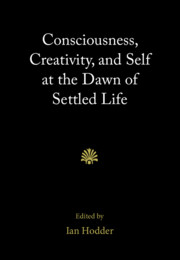Book contents
- Consciousness, Creativity, and Self at the Dawn of Settled Life
- Consciousness, Creativity, and Self at the Dawn of Settled Life
- Copyright page
- Contents
- Contributors
- Acknowledgments
- Part I Introduction to the Themes, Site, and Region
- Part II Higher Levels of Consciousness
- Part III Greater Innovation and Creativity
- 7 The Meronomic Model of Cognitive Change and Its Application to Neolithic Çatalhöyük
- 8 Containers and Creativity in the Late Neolithic Upper Mesopotamian
- 9 Creativity and Innovation in the Geometric Wall Paintings at Çatalhöyük
- Part IV Greater Awareness of an Integrated Personal Self
- Notes
- Index
- References
7 - The Meronomic Model of Cognitive Change and Its Application to Neolithic Çatalhöyük
from Part III - Greater Innovation and Creativity
Published online by Cambridge University Press: 22 February 2020
- Consciousness, Creativity, and Self at the Dawn of Settled Life
- Consciousness, Creativity, and Self at the Dawn of Settled Life
- Copyright page
- Contents
- Contributors
- Acknowledgments
- Part I Introduction to the Themes, Site, and Region
- Part II Higher Levels of Consciousness
- Part III Greater Innovation and Creativity
- 7 The Meronomic Model of Cognitive Change and Its Application to Neolithic Çatalhöyük
- 8 Containers and Creativity in the Late Neolithic Upper Mesopotamian
- 9 Creativity and Innovation in the Geometric Wall Paintings at Çatalhöyük
- Part IV Greater Awareness of an Integrated Personal Self
- Notes
- Index
- References
Summary
There is a natural desire to explain the development of cognitive phenomena that seem particularly characteristic of the human mind. Creativity is a case in point, consciousness another. A recent archaeological project has attempted to understand evidence from the Neolithic site of Çatalhöyük in relation to the emergence of both consciousness and creativity at the dawn of settled life. This project faces the need to settle on a precise understanding of what is meant by the terms in question. But theorists differ as to what this understanding should be. And there are deeper disputes relating to cognition in general. What the term ‘cognitive’ signifies continues to be debated, with some arguing that it has no precise meaning that would differentiate it from terms such as ‘adaptive’ and ‘intelligent’.
- Type
- Chapter
- Information
- Consciousness, Creativity, and Self at the Dawn of Settled Life , pp. 153 - 167Publisher: Cambridge University PressPrint publication year: 2020



